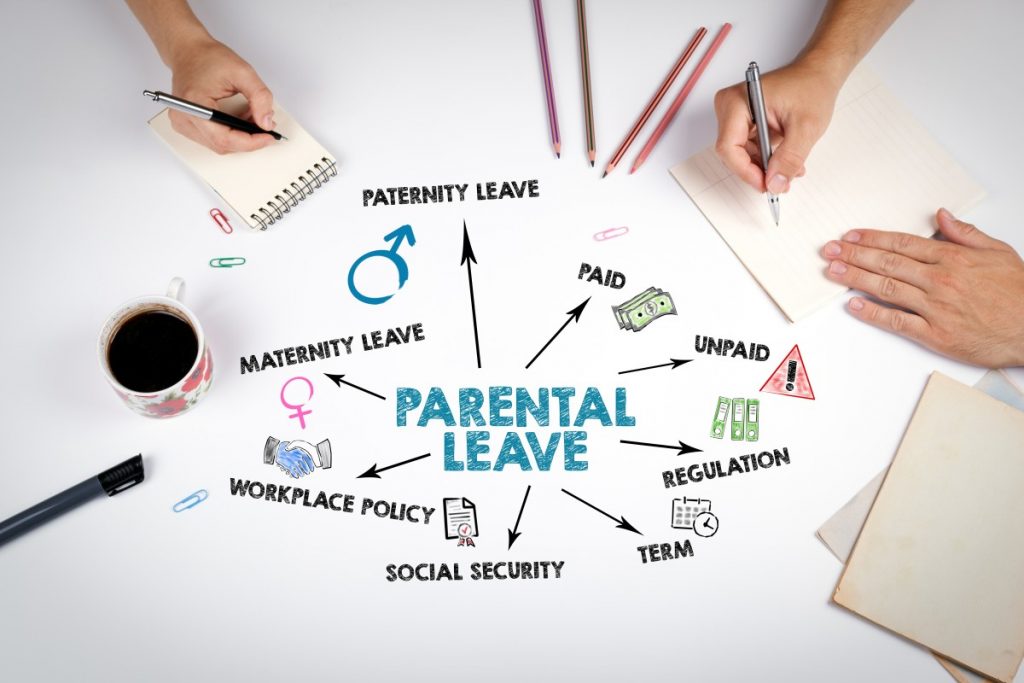
Maternity Rights
Understanding the Basics of Maternity Rights in the UK
Maternity rights are a fundamental aspect of UK employment law, designed to safeguard the health, financial security, and career progression of working mothers-to-be. It’s crucial for employers, business owners, and managers to understand these rights to foster a diverse, supportive and lawful working environment.
In the UK, all pregnant employees are entitled to maternity rights, regardless of how long they’ve been with the company or the number of hours they work. The two main elements of maternity rights are Maternity Leave and Statutory Maternity Pay (SMP). Maternity Leave gives expectant mothers the option to stop working up to 11 weeks before the expected week of childbirth, with a total of 52 weeks leave available. It is divided into Ordinary Maternity Leave (first 26 weeks) and Additional Maternity Leave (last 26 weeks).
On the other hand, Statutory Maternity Pay (SMP) is a weekly payment employers make to eligible employees who go on maternity leave. The eligibility criteria include continuous employment with the same employer for at least 26 weeks up to the ‘qualifying week’ – the 15th week before the expected week of childbirth.
Employers should note that maternity rights also extend protection against unfair treatment, discrimination, or dismissal due to pregnancy, childbirth, or maternity leave. Employees have the right to return to the same job after maternity leave or to a suitable alternative if it’s not reasonably practicable to return to the original role.
Understanding these fundamental aspects of maternity rights ensures businesses uphold their legal obligations. Moreover, it supports the cultivation of a respectful and inclusive workplace, essential for employee satisfaction, engagement and retention. As we look deeper into each aspect, we’ll explore how businesses can smoothly integrate these rights into their daily operations.
Essential Maternity Provisions and Their Effect on Business Processes
Recognizing the main entitlements associated with maternity rights is critical for businesses operating within the UK. These rights, while designed to protect pregnant employees and new mothers, also have substantial implications for how a business operates.
The first significant entitlement is the right to 52 weeks of maternity leave. Regardless of the duration of their employment or hours worked, all employees are eligible for this leave, divided into 26 weeks of Ordinary Maternity Leave and a subsequent 26 weeks of Additional Maternity Leave. Though not all employees opt for the full duration, it is crucial for businesses to anticipate and plan for this possible absence.
Next is Statutory Maternity Pay (SMP)
A vital provision that requires careful management. Employees who meet certain eligibility requirements are entitled to receive SMP for up to 39 weeks. This is an essential factor in business financial planning and can be especially impactful for smaller businesses. Fortunately, the majority of businesses can reclaim a significant percentage of SMP from HM Revenue and Customs, mitigating the financial implications.
Lastly, businesses must be aware of the essential right to protection against discrimination or unfair treatment during pregnancy and maternity leave. The law explicitly prohibits any form of discrimination or unfavourable treatment due to pregnancy, childbirth, or maternity leave. This includes the right to return to work to their original role or a suitable alternative, post-maternity leave.
The effect of these entitlements on business operations is substantial. Workforce planning must account for maternity leave, financial projections need to incorporate SMP, and the overall company culture must promote a supportive, inclusive environment. Understanding these key maternity entitlements not only ensures compliance but also promotes a healthier, more inclusive workplace.
Responsibilities of Employers During Maternity Periods
Understanding an employer’s obligations during an employee’s maternity period is a vital part of navigating UK employment law. Employers have a number of responsibilities during this time, including both financial obligations and duties to protect the rights of the employee.
The most immediate financial obligation is the provision of Statutory Maternity Pay (SMP). To qualify, an employee must have been continuously employed by the same employer for at least 26 weeks leading up to the ‘qualifying week’ – the 15th week before the expected week of childbirth. Employers must pay SMP for up to 39 weeks, at 90% of the employee’s average weekly earnings for the first 6 weeks, followed by £172.48 or 90% of their average weekly earnings (whichever is lower) for the next 33 weeks.
It’s also critical that employers continue to fulfil their obligations under the employment contract, excluding the employee’s normal pay. This means maintaining benefits such as accrual of annual leave during the maternity leave period.
Communication is Essential
Moreover, employers should ensure regular and meaningful communication with employees on maternity leave. This includes keeping them informed of any significant workplace changes, training opportunities or job vacancies that arise during their leave.
Crucially, employers must protect pregnant employees and those on maternity leave from any form of discrimination or unfair treatment. This involves providing necessary health and safety measures for pregnant employees and those who have recently given birth, and making reasonable adjustments to the workload or work conditions if necessary.
Finally, every employee has the right to return to work after their maternity leave. They should be allowed to return to their original job or, if this is not feasible, a suitable alternative job must be provided.
Understanding these obligations helps ensure a smooth maternity period for both the employer and the employee, while also preventing potential legal disputes.
How to Plan and Manage Maternity Leave Effectively
Successfully managing maternity leave is about balancing the needs of the business with the rights of the employee. While the thought of managing long-term absences can seem daunting, a proactive and planned approach can help mitigate potential disruptions and ensure a smooth transition.
Firstly, maintain an open dialogue with your employees. Encourage them to disclose their pregnancy as early as they’re comfortable doing so. This allows ample time for planning and helps to create a supportive environment.
Once informed, immediately discuss the expected length of the maternity leave. This allows for timely adjustments in workforce planning. Depending on the nature of the work, this might involve training other staff to cover the employee’s duties, hiring a temporary replacement, or redistributing tasks among existing team members.
Financial planning is another critical aspect. Ensure your payroll is prepared to handle Statutory Maternity Pay (SMP) requirements. Most small businesses can claim back up to 103% of SMP from the government, and larger companies can reclaim 92%, reducing the financial impact.
Keep in regular touch with employees during maternity leave, updating them about important changes in the workplace, but be mindful of their right to enjoy their leave without unnecessary disturbances. It’s a good idea to agree on the frequency and method of these communications beforehand.
Prepare for the employee’s return by discussing a clear and flexible return-to-work plan. This can include a phased return, part-time or flexible working hours, especially if the employee is breastfeeding or has other childcare considerations.
Remember, planning and communication are key to effectively managing maternity leave. Demonstrating a supportive approach not only meets your legal obligations but also contributes to a positive company culture, helping to retain talented staff and promoting your business as a great place to work.
The Consequences of Neglecting Maternity Rights
Ignoring or mishandling maternity rights is a serious offence that can lead to significant repercussions for a business. These can range from legal and financial consequences to reputational damage that can impact the company’s relationship with employees, customers, and the wider public.
From a legal perspective, employers who fail to respect maternity rights may face discrimination claims in an employment tribunal. This can lead to significant fines and compensation to the affected employee. Moreover, failure to pay Statutory Maternity Pay (SMP) correctly can result in fines from HM Revenue and Customs and in some cases, criminal prosecution.
Financially, these legal battles are not just costly in terms of penalties or compensation, but also in the form of legal fees and the time spent on managing the process. In addition, you could end up paying substantial sums for SMP arrears if you haven’t adhered to the correct payment procedures.
The reputational damage from cases of maternity rights neglect can be far-reaching. It can harm your company’s image as a fair and inclusive employer, making it more difficult to attract and retain talent. Furthermore, customers are becoming increasingly conscious of companies’ ethical practices and may choose to take their business elsewhere if they perceive a company to be treating its employees poorly.
Finally, neglecting maternity rights can impact the morale and productivity of your existing workforce. Employees who witness their colleagues being treated unfairly may become demotivated or disillusioned, which can affect their own performance and commitment to the company.
In short, the consequences of neglecting maternity rights can be extensive and damaging. Compliance is not just about avoiding these negatives but also about fostering a positive, supportive, and inclusive workplace that enhances your company’s reputation and productivity.
Promoting an Inclusive Workplace: Beyond Legal Obligations
Going beyond the letter of the law in supporting maternity rights can bring manifold benefits to a business, enhancing its reputation, fostering employee loyalty, and promoting diversity and inclusivity. Here are some best practices for promoting an inclusive workplace for expectant mothers and those on maternity leave.
Firstly, ensure your workplace is supportive and accommodating to pregnant employees. This includes providing necessary resources and making physical adjustments to the workspace if required. It’s also important to treat any health-related absences sympathetically and to respect the need for antenatal appointments.
Secondly, while on maternity leave, the employee should be made to feel part of the team. Regular, agreed-upon communication can help them stay informed about important updates, but it’s equally important to respect their need for space and time with their new child.
Preparing for Return
When preparing for an employee’s return, it’s beneficial to discuss the transition back to work well in advance. Offering a phased return or flexible working arrangements can be immensely helpful for new parents. Furthermore, facilities for breastfeeding mothers, such as a private room, can make a big difference.
Training for management and HR teams on maternity rights and how to foster a supportive environment is also crucial. This can help prevent unintentional discrimination and ensure all staff are treated fairly.
Finally, a positive approach to maternity rights should be part of a broader commitment to diversity and inclusivity. This means promoting a culture that values all employees, regardless of their personal circumstances.
In conclusion, respecting and supporting maternity rights is not just about complying with the law. It’s an opportunity to create an inclusive, diverse, and supportive workplace culture that can enhance your business’s reputation, improve employee satisfaction, and ultimately contribute to the success of your company.
Call John Bloor at EBS Law on 01625 87 4400 if you are an employer and need free Employment Law Advice.


